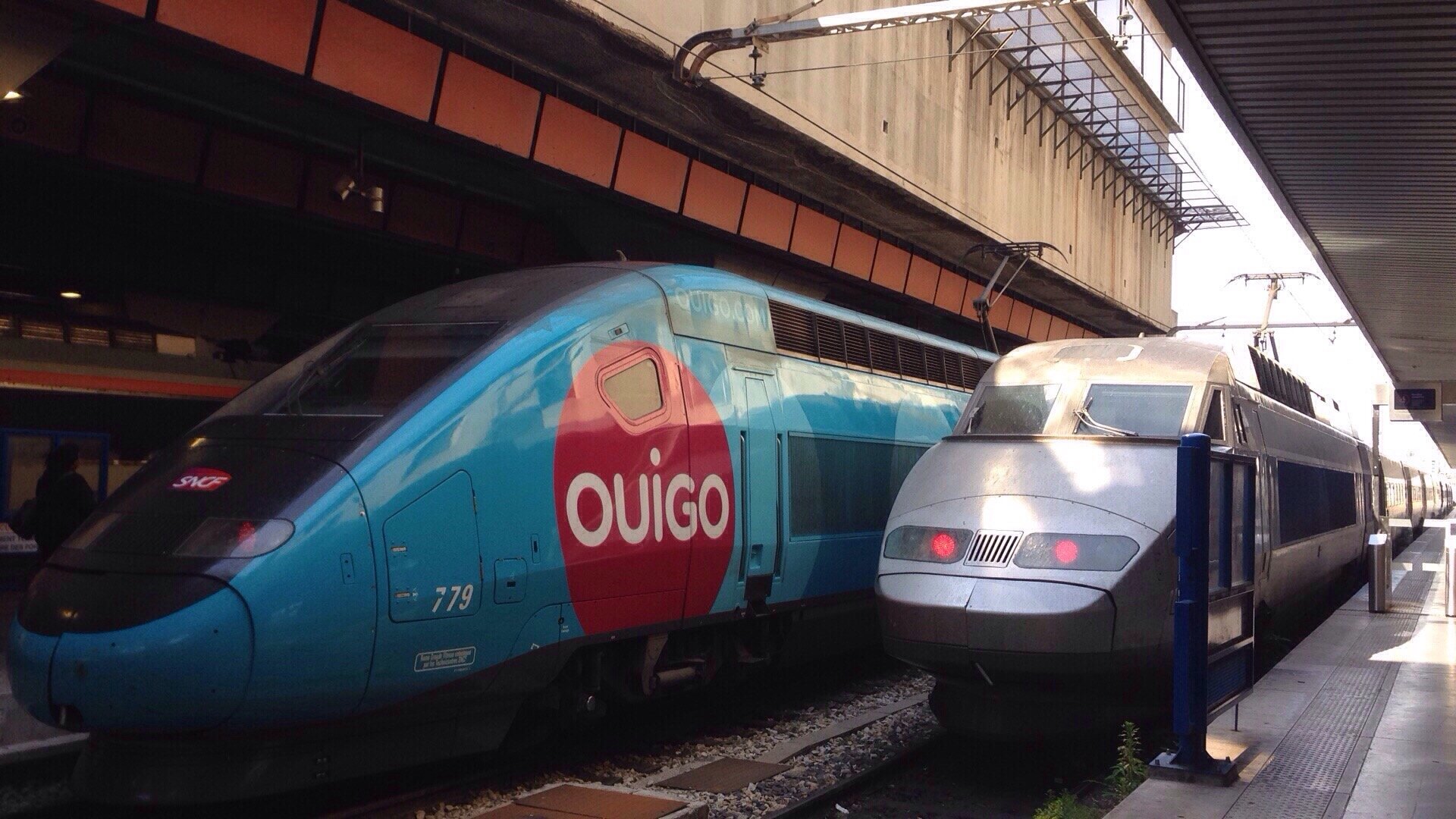Saving on tickets: choosing the right fare
France’s railroad monopoly is the state-owned SNCF. It operates all major trains of local railroads, including TGV high-speed trains and TER suburban trains. What trains are available in France
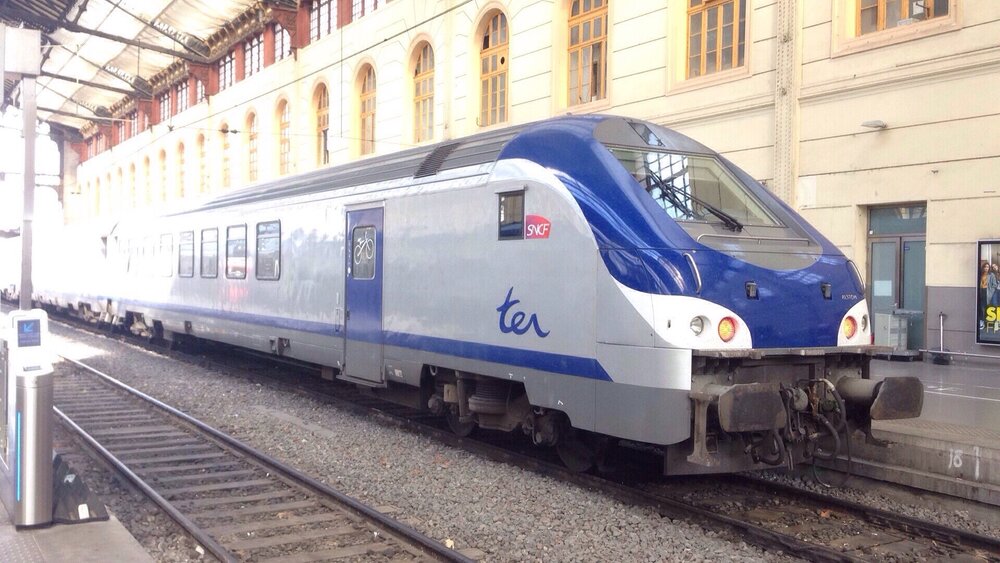
SNCF fares
SNCF’s three key fare plans apply to most rail tickets in the country. Tickets are distinguished by colored markers above the price: blue, blue or purple.
- Non echangeable (non echangeable): tickets with blue markings, the cheapest.
- Echangeable: blue tickets that can be exchanged, but the less time left until departure, the higher the exchange fee. Sometimes it is better to change to a more expensive version, in which case there is no fee and you only have to pay the difference in price.
- Refundable/flexible: the most expensive, but also the most reliable — it can be rented and exchanged without fees. It is distinguished by a purple label.
TGV and Intercité fares
There are three categories of tickets on these high-speed trains, but all of them are more favorable to buy in advance.
- Prem 's fare is for those who plan their trips 3 months in advance and earlier: tickets at a minimum price and in limited quantities. Sales usually start 90 days in advance. These tickets cannot be refunded or exchanged.
- Loisir fare — tickets at standard price, exchange or refund of tickets is possible with deduction of commission.
- The Pro fare is the most expensive and flexible: you can return it without commission, even if the train has already left the station without you for 2 hours.
- On TGV and Intercités trains, there is a group fare called Pack Tribu, designed for companies of 3 people or more traveling together. It gives them a 25% discount if they buy three or more tickets for the same flight.
The carrier’s website periodically features promotions and new fares.
Discounts for passengers on trains in France
SNCF offers up to 12—13 different discounts for different categories of passengers and circumstances: for regular travelers, students, large families, military, etc. Of these, tourists can access those that apply to certain ages and one-off trips.
Travelers may be eligible for discounted fares based on age:
- Babies under 4 years old travel on French trains for free, but without a seat, on their parents' lap.
- Children under 12 years old on the «Avantage famille» card are 60% off and accompanying adults are 30% off.
- There is a special «Avantage senior» card for seniors and an «Avantage jeune» card for young people (12—27 years old). They offer a 30% discount on 1st and 2nd class tickets on TGV INOUI, TER and Intercite trains.
Children’s tickets cannot be exchanged or refunded. Youth» and «third age» fares allow a single ticket exchange before departure.
Check the carrier’s website before traveling — there may be new terms and conditions.
How to save money on trains in France
A few tips from a local: how the French themselves plan train journeys.
- The right time to travel is low season and weekdays. The busiest days of the week are Friday and Sunday, and Saturday during school vacations.
- Buying online is more profitable and convenient. Especially if they are TGV low-cost carriers.
- Buy your ticket in advance: the earlier the cheaper. A ticket bought several months in advance may cost half the price.
- Do not overpay for the class of the car. Usually the first class differs from the second class only in the width of the aisle and seats, plus unimportant additional options. Often first and second class seats are located in the same carriage and are separated by a transparent partition. In France, all trains are comfortable, fast, air-conditioned and with soft seats. There are no cars in poor condition even on suburban trains.
- Traveling in a group is more profitable. Tickets for TER trains for companies of 3—5 people traveling together are sold at a discount of up to 50%. And on TGV and Intercités trains, if you buy three tickets for the same journey at the group rate, the fourth ticket is free of charge.
- It can be advantageous to combine itineraries. If the starting point of your trip is Paris, it is cheaper to start your voyage around the country from the suburbs, rather than from the central station in the capital. For example, if you need Avignon, a Frenchman will buy a ticket to Marseille on the high-speed but inexpensive Ouigo and then take the TER train Marseille-Avignon.
Baggage transportation on French trains
Baggage rules are generally the same on French trains. The differences depend on the type of train and mainly concern free baggage allowances.
- On TGV trains, in addition to 1 suitcase and 1 piece of hand luggage, the ticket price includes: skis, a baby carriage and a disassembled bicycle packed in a special case. On some routes, TGV carriages are equipped with suspension mounts for unassembled bicycles, up to 4 bicycles. A seat for an assembled bicycle must be reserved for 10 € when buying a ticket.
- Eurostar includes 2 pieces of luggage and 1 piece of hand luggage in the price of a rail ticket. There is no weight limit for luggage, but the size of a suitcase is a maximum of 85 cm in length. Oversized luggage (e.g. a bicycle) is transported at an extra charge and in the baggage car. If the cargo is valuable and it is important to keep it with you, you must buy a child ticket for it.
- Pets are allowed to be transported only in a container and with a separate ticket. If the animal is large, it is placed in the vestibule of the last carriage.
- There are compartments for large luggage at the beginning and end of each seated car. They are not guarded, so you will have to keep an eye on your belongings. For peace of mind, some passengers strap their luggage to the rack shelf like a bicycle. It is not unreasonable to sign the suitcases, indicating your coordinates. Luggage tags are issued when you buy a ticket at the ticket office.
Where and how do I buy a ticket?
There are three main ways to buy railroad tickets: at the ticket office, in a special machine at the railway station and online.
At the cash register
Rarely does a French cashier speak English, but a note prepared in advance will help avoid misunderstandings. In it you should specify the main parameters of the ticket: date, time of departure, route, desired fare and final price.
At major railroad stations, ticket offices are separate:
- International — a ticket office serving international destinations.
- Grandes lignes are long-distance routes.
- Banlieue — commuter trains.
- Achat a l’avance — advance ticket sales.
- Depart du jour — tickets sold on the day of departure.
There are a few nuances to be aware of when buying tickets at the box office:
- Tickets paid for by bank card cannot be refunded.
- A round-trip ticket will be cheaper.
- Check the ticket without leaving the ticket office. In this case, the cashier will correct the error free of charge. As soon as you leave the counter, the reissue procedure will cost 2 €.
In the vending machine
Automatic Ticket Machines (Automatic Ticket Machine) are available at almost all train stations. They are of different colors, depending on the type of train they sell tickets for. For example, you can buy a ticket only for the TER suburban train, and white ones for all SNCF long-distance trains.
- The vending machine menus are in French.
- They accept only chip-enabled bank cards and euro coins for payment, but they do not accept banknotes.
- The card can be used to pay for tickets from 2 € and up.
- It is not necessary to prepare the exact amount when paying in cash. The machine gives you change.
- The button on the dispenser responsible for starting the machine is called «Depart immediate».
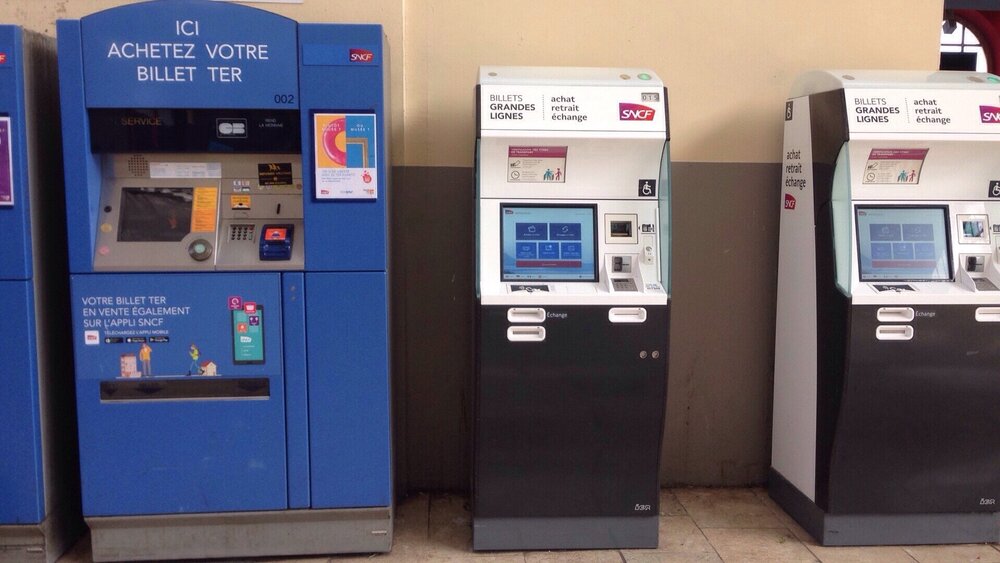
Online
It is more convenient for a foreign tourist to buy a ticket on the SNCF or Quigo website. There is no mandatory registration, and the algorithm of actions is simple and familiar.
The printed electronic ticket (e-ticket) is presented to the checker on the train together with your passport. The paper version of the e-ticket can be obtained in advance at any train station from the ticket office using the data sent to your e-mail.
You can print an e-ticket at a special yellow-colored machine at the train station. To do this, you need to enter the 4-digit code that you receive in the mail after paying for the ticket and have the bank card you used to pay for the ticket. The operation is completely free of charge.
What you need to know about trains in France
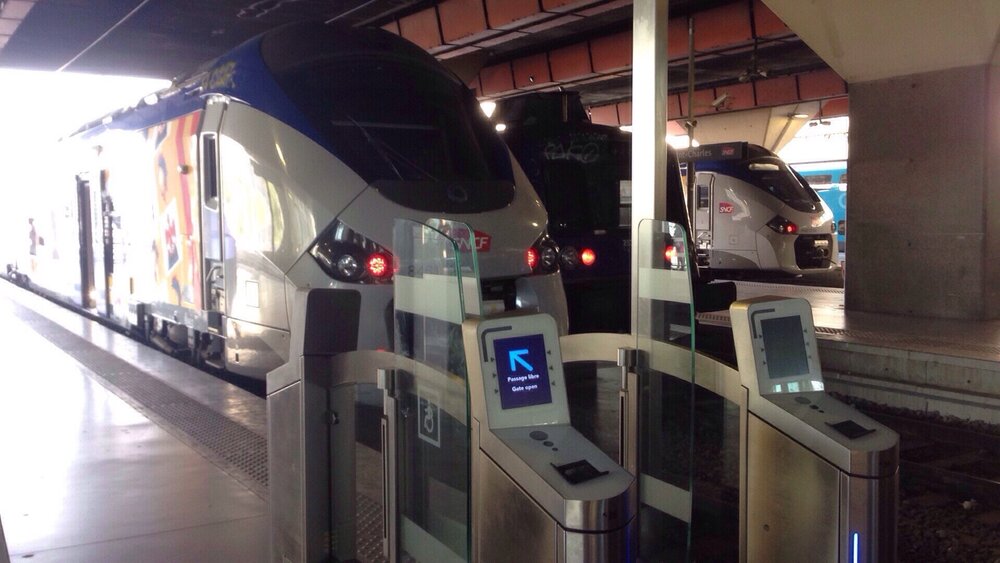
- Don’t ignore insurance. It costs 2—5 €, but it will allow you to exchange or refund your ticket, even at the last minute. The insurance is voluntary and is offered when you buy your ticket at the ticket office or online.
- Only tickets that do not bear the date and time of travel but have the inscription «A composter avant l’acces au train» should be composted. An uncomposted ticket without a date is valid for two months.
- E-tickets are not composted. They already have a barcode on them, which will be scanned by the checker on the train.
- A valid ticket is valid for 24 hours. You can get off the train at an intermediate station and then get back on the train and continue on your original route. The main thing is to meet the 24-hour deadline from the moment of composting.
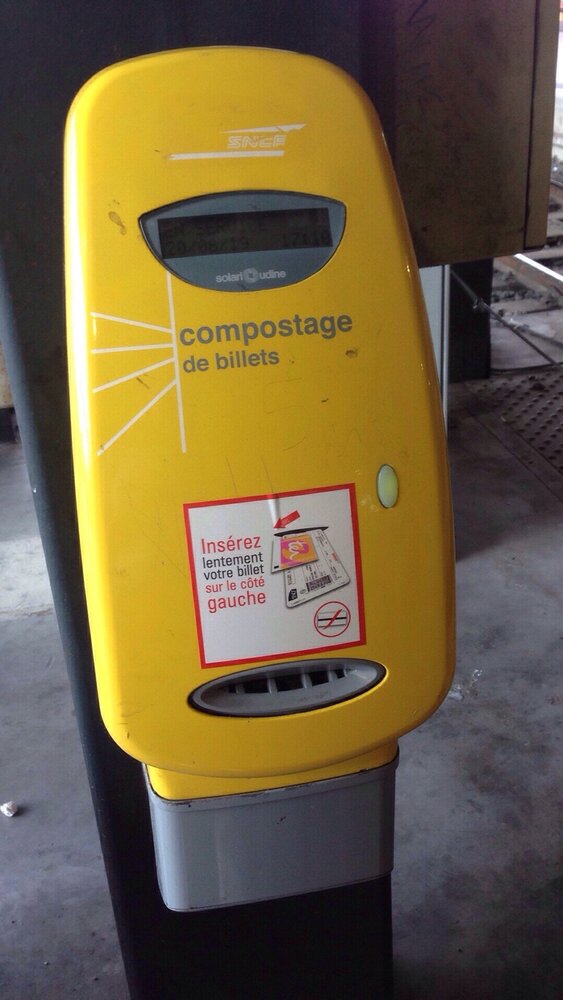
The ticket can be composted at yellow machines located near the train platforms or directly on the train, at the conductor who walks through the cars at the beginning of the journey.
- If you are late and don’t have time to buy a ticket, run straight to the train, get in the car and look for the conductor at the head of the train. He will sell you a ticket, but will charge you a commission of 3—6 €. To avoid problems with change, it is better to pay with a card.
- The penalty for a stowaway or an unopened ticket is double its value.
- A track (platform) is French for «voie». Both numerical (1, 2, 3) and alphabetic (A, B, C) designations are allowed. Car numbers are not indicated on the outside, but on the inside of the car door. Moreover, it is rather small.
- Download the SNCF Direct app, it allows you to view all flight data in real time and get information about station services.
- Lots of practical information on booking tickets, schedules, itineraries on the Voyages SNCF website.
The material uses photos by Maria Barybina.

